
How To Answer a Problem Question
by Christopher Enright
Problem questions are a standard exercise for teaching law students about the law and for training the students in some important skills for working with law. For these reasons problem questions are also a common type of question for assessing law students in exams and assignments. Problem questions also help law students in their practical training because they imitate the task that lawyers perform when they advise a client, typically in circumstances where there is a possibility of litigation.
Answering a problem question requires four fundamental legal skills that lawyers need. These are the skills of organising law, applying law to facts, interpreting law and writing law.
This book explains how to answers a problem question. It does this by providing a model. Naturally this model incorporates advice on how to perform the four fundamental skills that are needed to answer a problem question.
Chapter 1 sets out the model for answering a problem question in a diagram. The diagram takes the following form:
- Step 1. Performing Tasks for the Facts
- Step 2. Constructing a Framework
- Step 3. Applying Law
- Step 4. Interpreting Law
- 4.1 Identify the Meanings and Effects
- 4.2 Identify the Purpose and Object
- 4.3 Identify the Correct Meaning
- Step 5. Determining the Outcome
- Step 6. Writing the Answer
The book has three parts:
- Chapter 1 explains the nature and use of problem questions.
- Chapters 2-7 explain in turn each of the steps in answering a problem question.
- Chapter 8 illustrates the task of answering a problem question. It sets up the illustration by presenting a problem question that is based on a set of hypothetical facts and a provision in a hypothetical statute. It then states the task to be done which is to advise one of the parties. The ensuing illustration proceeds through each of the six steps in turn. It performs each step and where appropriate gives advice. In concludes by presenting a version of the answer. Needless to say there is often room to argue as to what should or should not be in an advice or there can be different ways of saying the same thing. Consequently the answer that Chapter 8 presents is not holy writ, merely an illustration.
124 pages softcover
About the Author
Christopher Enright is a chartered accountant, barrister and solicitor. He has lectured in law at several universities. He specialises in legal method.

This book describes a structured approach to legal research consisting of 12 steps. The idea is to present a step by step approach to legal research that is as foolproof as human endeavour can make it.
Vast numbers of statutes rule our lives. Many of them are not easy to read. Parts of some are almost impossible to read. This book sets out some ways of drafting statutes that makes them easier to read.
This book starts from the ground up to explain the logical structure and function of a privative clause. It then considers in a critical way the reasoning of the High Court. It points out aspects that need further attention because the court’s reasoning is unsatisfactory. It also points out relevant legal considerations that the court has so far overlooked.
The skill of interpreting a statute is important for one good reason – the outcome of a case commonly enough depends on how a court interprets an ambiguous provision in a statute. Yet despite the importance of interpreting statutes there have been no serious attempts so far to describe an effective method for performing the task.
Lawyers tend to be skills averse. They absorb some way of performing various tasks with law but without explicit or proper instruction. This lessens their ability to learn law as students and to work with law as legal practitioners. This book aims to rectify this problem.
Complaints about legal writing, like billable hours, just keep mounting. This book seeks to solve the problem of lack of understanding by a two-stranded approach.
Little attention is paid in law schools to the reasoning processes for proving facts. This book seeks to rectify this problem. It contains a four-step model for proving facts.
There are numerous sources of law in Australia, which possesses sixteen legal systems, being the Commomwealth, six states and nine territories. The purpose of this book is to explain the nature of the sources of law used in these legal systems.
This book explains the task necessary for trial advocacy for a case based on a dispute of facts.
The primary purpose of this book is to provide law students with the text of constitutional legislation and documents. Law students need these in several types of courses. The obvious courses are introductory law courses as well as public law courses on constitutional law, administrative law and human rights.
The aim of this book is to provide an array of exercises that assist students in understanding the Constitution of the Commonwealth of Australia.
The purpose of this book is to state the major principles of constitutional law in a simple and straightforward manner. It is designed as a first reader in the subject prior to attacking the intricacies of federal constitutional law later in a law course.
Legal education pays little attention to ambiguity. This leads to neglect of two important aspects of ambiguity.
This book explains an effective method for interpreting the object and meaning of statutes of law.
This book explains an effective method for efficiently organising the elements of law and litigation, and describes how these are related to the facts and consequences of a case.
Proving facts in court is an uncertain business. This book describes a model for proof of facts to throw some light on the subject and to make the task more systematic.
Common law is a messy beast. This book seeks first to analyse and explains it and enable readers to work with common laww more effectively.
This book covers the essentials of clear writing techniques and teaches skills on how to plan for and perform well in examinations.
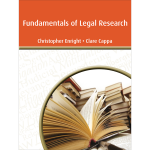 Fundamentals of Legal Research
Fundamentals of Legal Research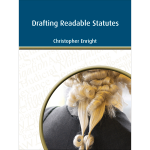 Drafting Readable Statutes
Drafting Readable Statutes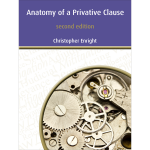 Anatomy of a Privative Clause (2nd Edition)
Anatomy of a Privative Clause (2nd Edition)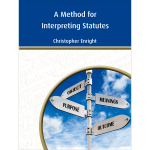 A Method for Interpreting Statutes
A Method for Interpreting Statutes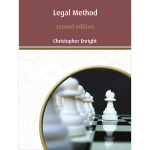 Legal Method (2nd Edition)
Legal Method (2nd Edition)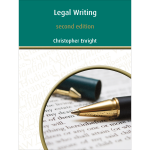 Legal Writing (2nd Edition)
Legal Writing (2nd Edition)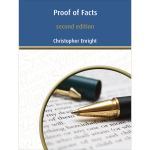 Proof of Facts (2nd Edition)
Proof of Facts (2nd Edition)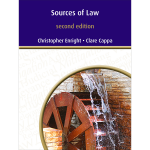 Sources of Law (2nd Edition)
Sources of Law (2nd Edition)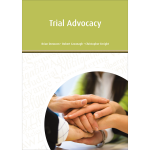 Trial Advocacy
Trial Advocacy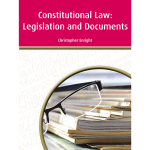 Constitutional Law: Legislation and Documents
Constitutional Law: Legislation and Documents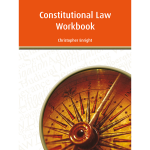 Constitutional Law: Workbook
Constitutional Law: Workbook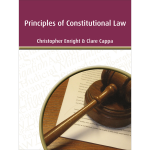 Principles of Constitutional Law
Principles of Constitutional Law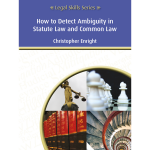 How To Detect Ambiguity in Statute Law and Common Law
How To Detect Ambiguity in Statute Law and Common Law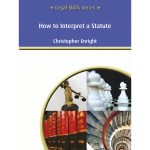 How To Interpret a Statute
How To Interpret a Statute How To Organise Law and Litigation
How To Organise Law and Litigation How To Prove Facts
How To Prove Facts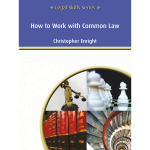 How To Work with Common Law
How To Work with Common Law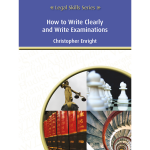 How to Write Clearly and Write Examinations
How to Write Clearly and Write Examinations